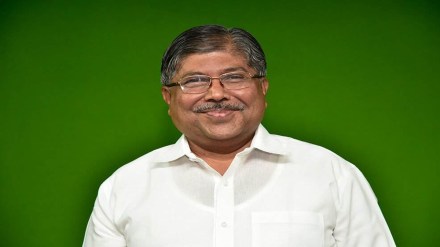Chandrakant Patil, the higher and technical education minister of Maharashtra, believes that open-book exams will allow students to ‘apply’ what they’ve learnt, instead of simply recalling facts. “Professionals often have access to reference materials when making decisions or solving problems, so why not students,” he says. In an interaction with FE’s Vikram Chaudhary, he talks about twice-a-year Board exams, why Maharashtra’s GER is higher than India’s, and the steps the state is taking to facilitate greater participation of women in higher education. Excerpts:
Following the CBSE’s lead, Maharashtra wants to conduct open-book exams. What are the advantages and disadvantages? For which all classes will these be conducted?
As we move towards effective implementation of the New Education Policy (NEP) 2020, we foresee a shift in teacher-centric policies to student-centric approaches (ones that empower students to choose what they wish to study).
In this regard, we believe open-book exams would, in a sense, encourage students to actively apply critical-thinking and problem-solving skills. Such exams would also allow students to ‘apply’ what they’ve learnt instead of simply recalling facts.
We believe such exams can prepare students for the real world – given the fact that, in the real world, professionals often have access to reference materials when making decisions or solving problems.
Moreover, open-book exams can reduce stress levels amongst students by alleviating the pressure associated with extensive memorisation. This shift towards understanding and application rather than mere recall can lead to a holistic learning experience.
How will you implement such exams?
We have to carefully consider potential challenges that such a model can bring. To start with, we will ensure these exams effectively assess students’ understanding of the subject matter, without ‘overly’ relying on external resources. We also aim to address concerns about maintaining student motivation and integrity during the assessment process. We are working towards this.
The Union government has said that Board exams for classes 10 and 12 will be conducted twice a year. What are your views? Is the step beneficial for students?
Yes, the Union education minister Dharmendra Pradhan has said that starting from the academic session 2025-26, students can take 10th and 12th Board exams twice a year. The aim is to provide ample opportunities for students to excel academically, while reducing academic stress. By allowing students to choose when to sit for exams, we can empower them to better manage their study schedules and prepare accordingly.
In Maharashtra, we are working on modifying our rules and processes to accommodate this student-focused vision. This move also supports our government’s long-term goal of nurturing a skilled and competitive workforce, ultimately contributing towards making India a developed country by 2047.
According to the All India Survey on Higher Education (AISHE) 2021-22 – whose findings were released on January 25, 2024 – Maharashtra saw 93% jump in PhD enrolments in the last five years (significantly higher than the national average of 32% rise). How did this happen?
Yes, in the academic year 2017-18 we had 9,206 PhD enrolments. In 2021-22, these increased to 17,832 candidates. This is the result of our focus on higher education over the last few years. Some steps we’ve taken include:
– Granting ‘research centre’ status to many important institutes;
– Constituting the Maharashtra Responsible Research and Innovation Taskforce (MSRRIT) to effectively track research activity in the state, ideate on interventions to improve quality of research, and write down SoPs for conducting research as well as collaborating with international and national bodies;
– Collaborating with the University of Birmingham (the UK) and the UNSW Canberra (Australia), which offer 20 PhD scholarships every year to high-achieving students from state universities to advance joint research and knowledge exchange.
What about female enrolment in higher education?
In the upcoming academic year (2024-25), we will set up 264 colleges under 13 non-agricultural state universities. Of these 264, as many as 82 will be for women, affiliated to the SNDT Women’s University – the first women’s university in the country. While offering conventional courses in arts, commerce and sciences, these colleges will also provide specialised programmes with a focus on enhancing skills and capabilities of female students.
To facilitate greater participation of women in higher education, we are also considering announcing a complete waiver of academic fees for girls hailing from families with total income of Rs 8 lakh or less. The end-goal is significantly increasing women’s gross enrolment ratio (GER) in higher education from 33.5% in 2020-21 to 50% by 2035.
And what is the overall GER in Maharashtra?
It grew from 31.4% in 2017-18 to 35.3% in 2021-22, which is above the national average of 28.4%.
To further student enrolment, we are running ‘School Connect’ pan-Maharashtra campaign, and aim to spread awareness amongst students in 11th and 12th grades about different scholarships that can be availed for higher education, in addition to sessions on NEP – helping them understand the policy that shall eventually help them excel in their careers.
How many schools, colleges, universities, and specialised colleges (medical, MBA, engineering, nursing, pharma, research institutions, etc) does Maharashtra have?
We have over 85 universities and a network of more than 6,000 colleges and standalone institutions. We host a staggering 330,000 postgraduate students, the largest in India, and nearly 2.8 million undergraduate students (second-largest in the country). We also have the highest number of polytechnic colleges (746 institutions with more than 200,000 students enrolled).
